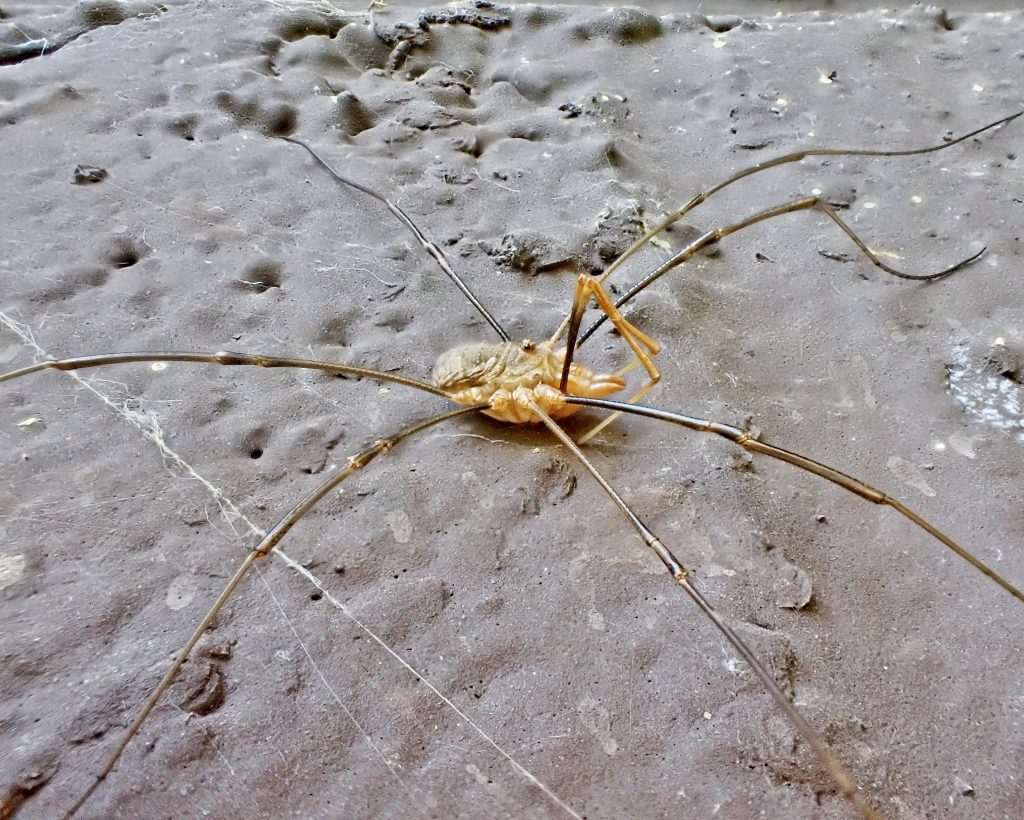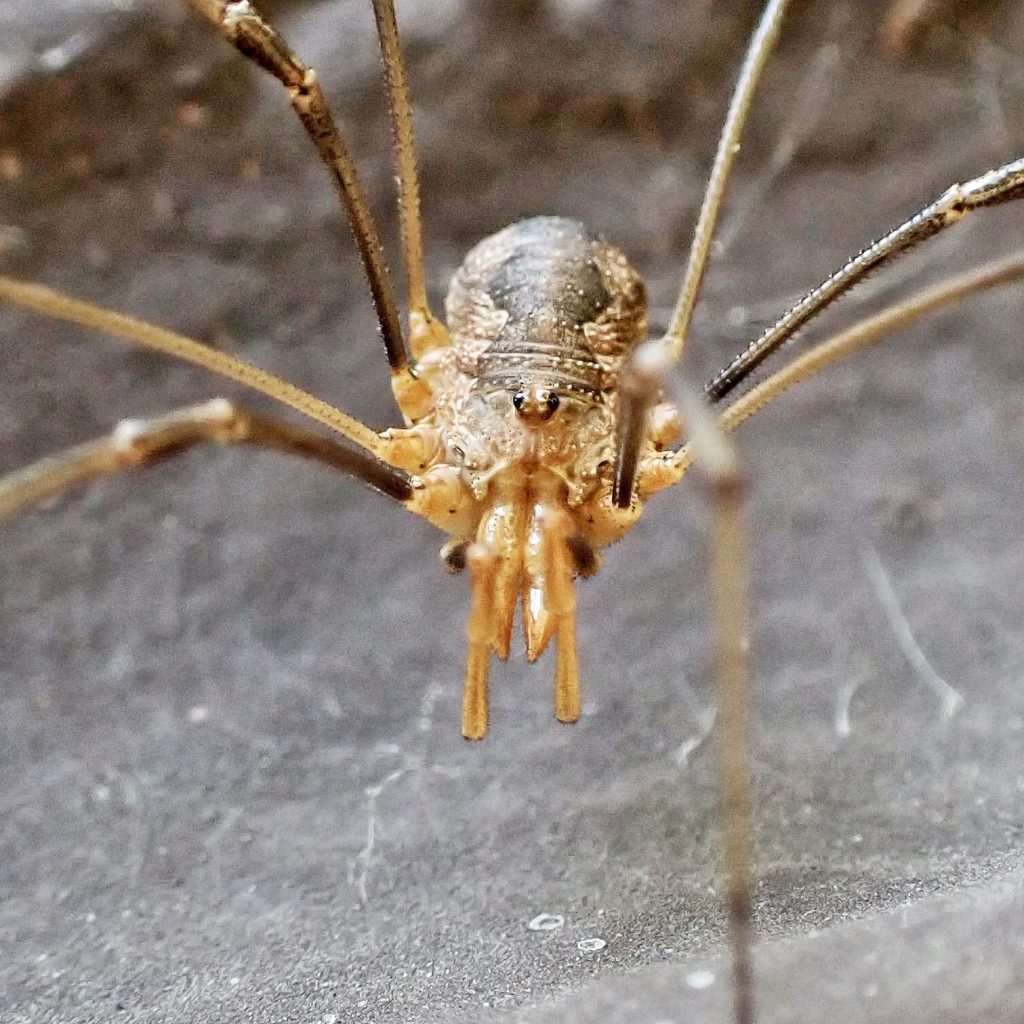
In our region there are at least 70 species of the arachnids called harvestmen, but the only one I can identify is Phalangium opilio. The reason these are so identifiable is that they are the only harvestmen in North America where the males have long spikes protruding from their chelicerae, and both males and females have a pair of black pointed tubercles at the base of the chelicerae. But I can only identify the males on sight, because those tubercles are tiny, and require a certain amount of magnification to be seen.
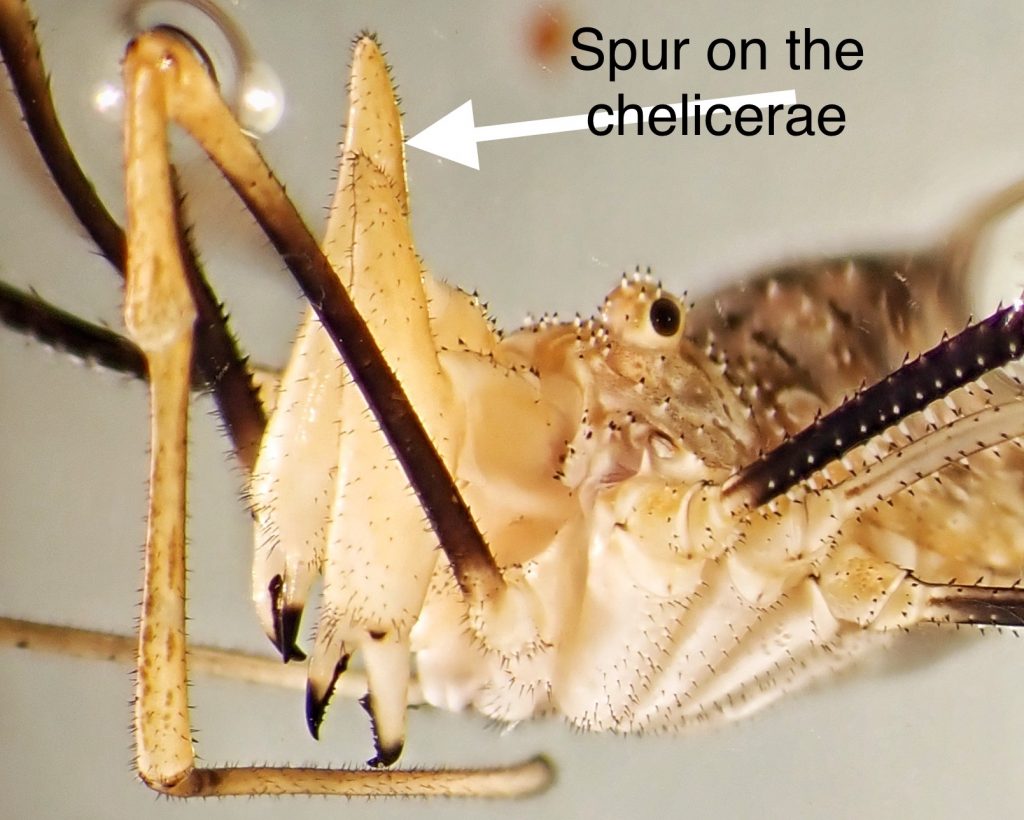
P. opilio often go by the common names common harvestman, brown harvestman and daddy longlegs, and a host of other regional colloquial names in its holarctic range, though none of them are ‘accepted’ by any arachnological society. And it shares the sobriquet ‘daddy longlegs’ with various Pholcus spiders, and apparently even with crane flies, rendering it useless as a means of identifying a particular organism.
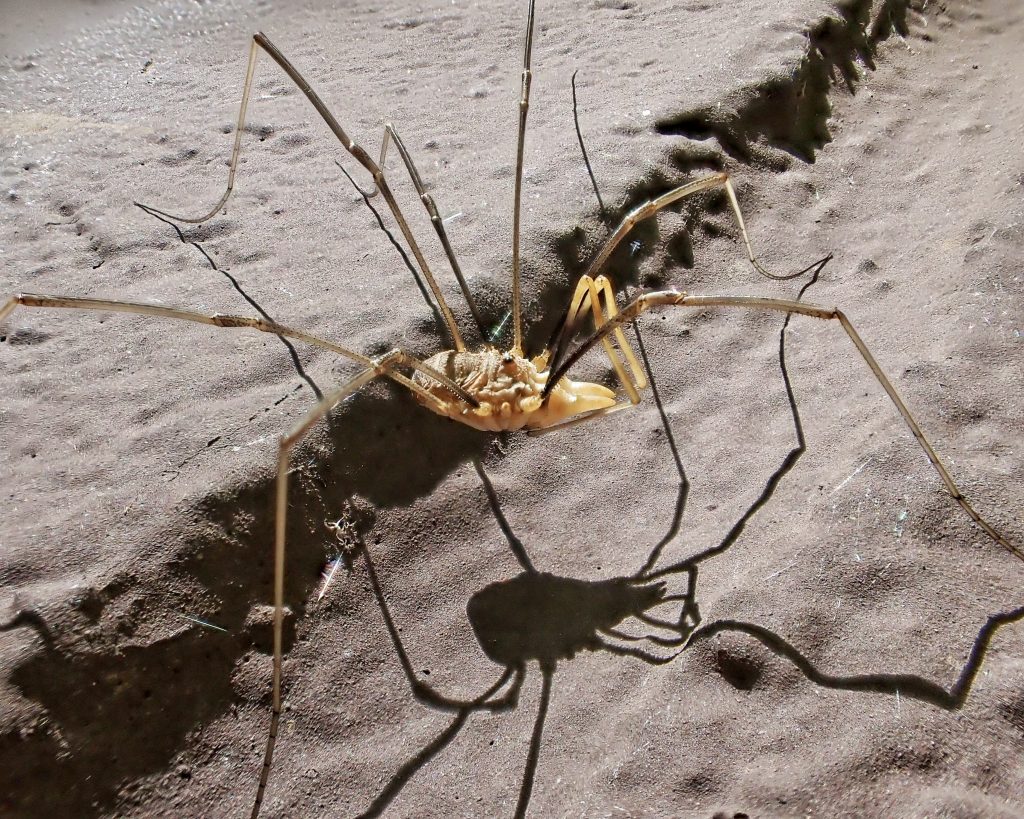
They are in the order Opiliones, and are readily distinguishable from spiders by the abdomen and thorax appearing to be one unit. Other differences between spiders and harvestmen are that harvestmen do not produce silk and therefore do not build webs, are not venomous (putting the lie to the myth of their toxicity), and have only a single pair of eyes, which are mounted on a raised projection in the middle of the cephalothorax.
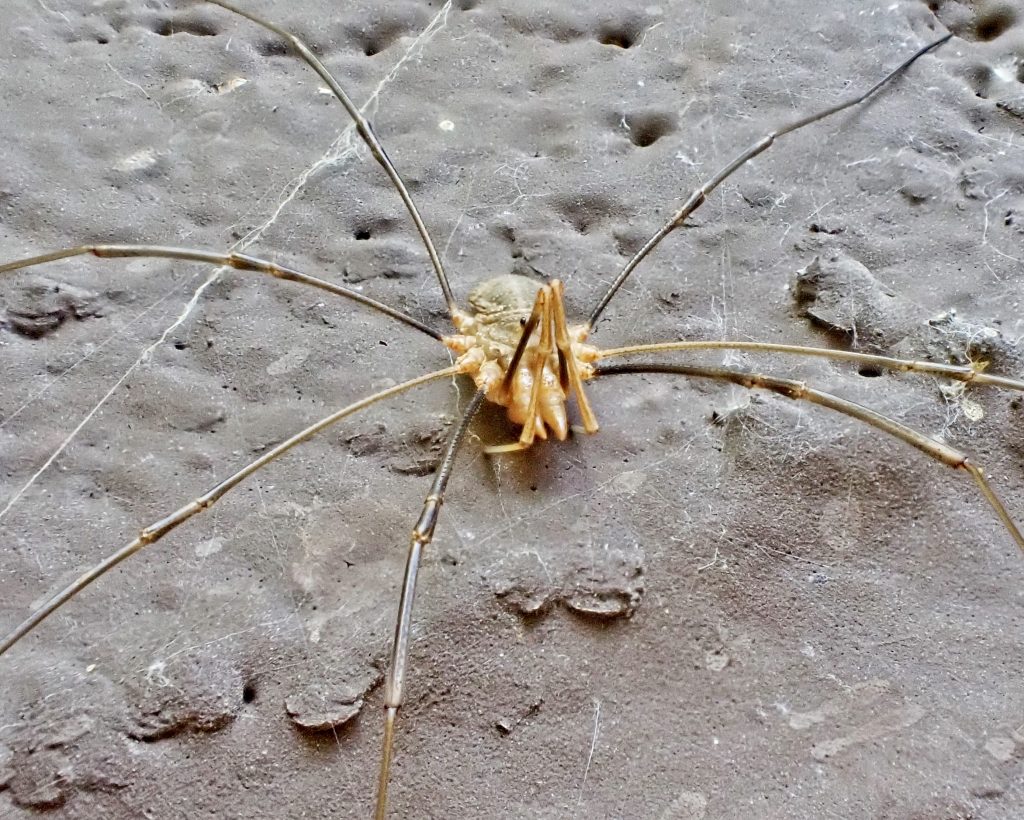
And though they have 8 legs like spiders, they only use 6 for walking. The second pair, which are the longest legs they have, are covered in highly sensitive setae, which act as sensory organs. They also have extremely flexible tarsi because they have many joints that break the tarsi into pseudosegments called tarsomeres, and in the case of P. opilio they have 80 tarsomeres. They use these highly reticulated legs for courtship, fighting, and climbing, as well as for sensory purposes, similar to how insects use antenna.
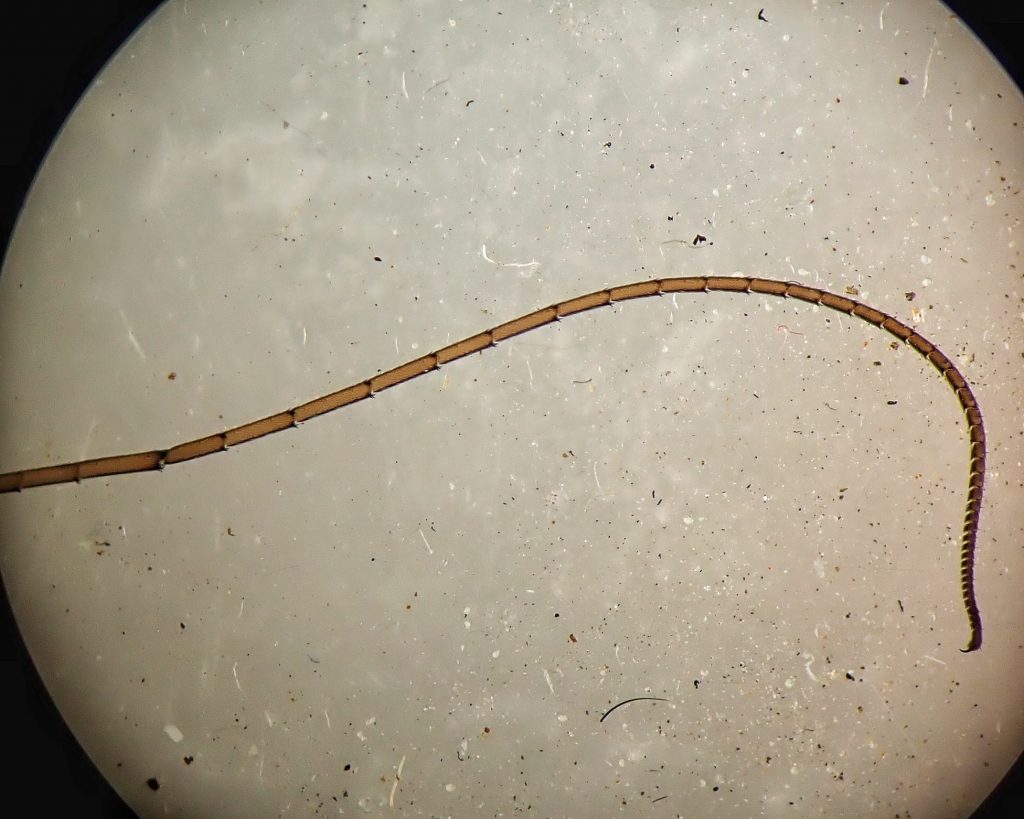
Description– “Males have a large spur/horn on the anterior surface of the first cheliceral segment. Males also tend to have long, thin pedipalps relative to those of other harvestmen…Both sexes have small tubercule-mounted spikes on the anterior surface of their body, in between the top of chelicerae and the anterior end of the dorsum.” Species Phalangium opilio – BugGuide.Net; “Like other harvestmen, P. opilio have long, slender legs and a short, round body. Adult P. opilio have a body length of 3.5–9 mm (1⁄8–3⁄8 in). Males tend to have smaller bodies than females. Both sexes are similarly coloured and are marked light brown and gray, often with a light cream underside…P. opilio is relatively large compared to other harvestmen species. Individuals of both sexes have very long pedipalps, and their legs, bodies, and eye tubercles are covered with spines. Males can be differentiated from females by their longer pedipalps and the existence of long, forward-pointing processes, appearing similar to horns, on the second segment of their chelicerae.”
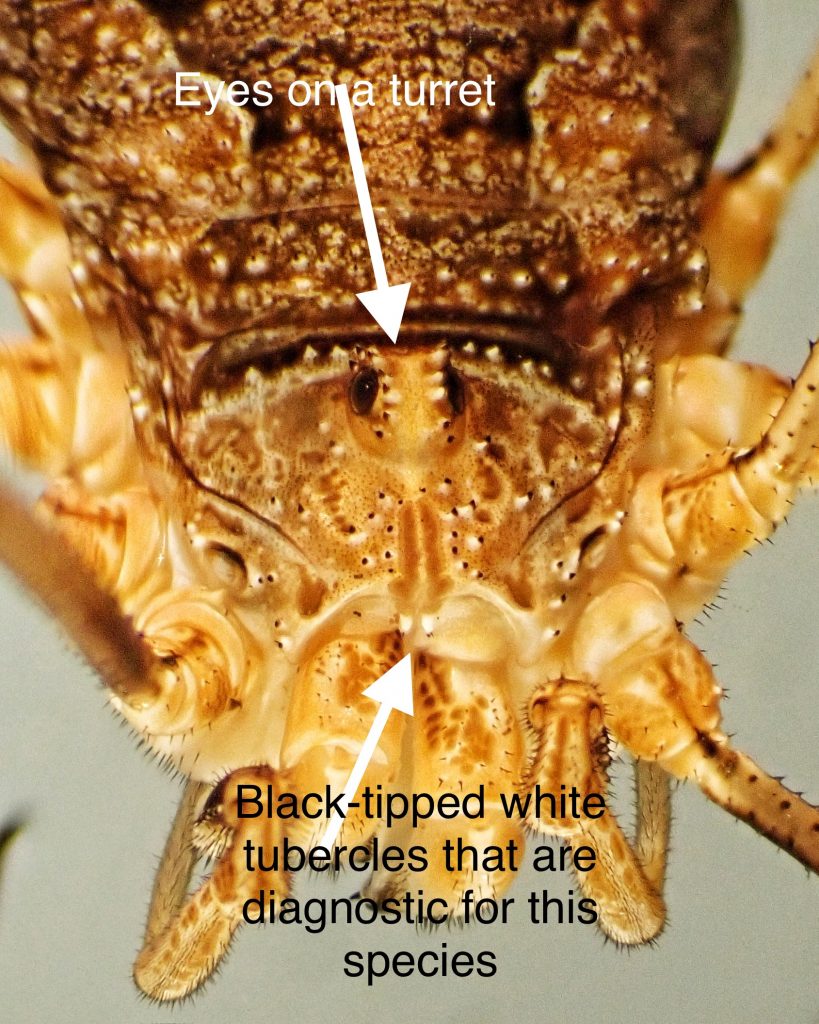
Similar species– “No other similar harvestmen in our area have a pair of spine bearing points above the bases of the chelicerae, or male with long, hornlike chelicerae.” Merrill Peterson; “Pacific Northwest Insects”; 2018
Range– Native to Europe, presently Holarctic in distribution; found region wide in the PNW in appropriate habitat.
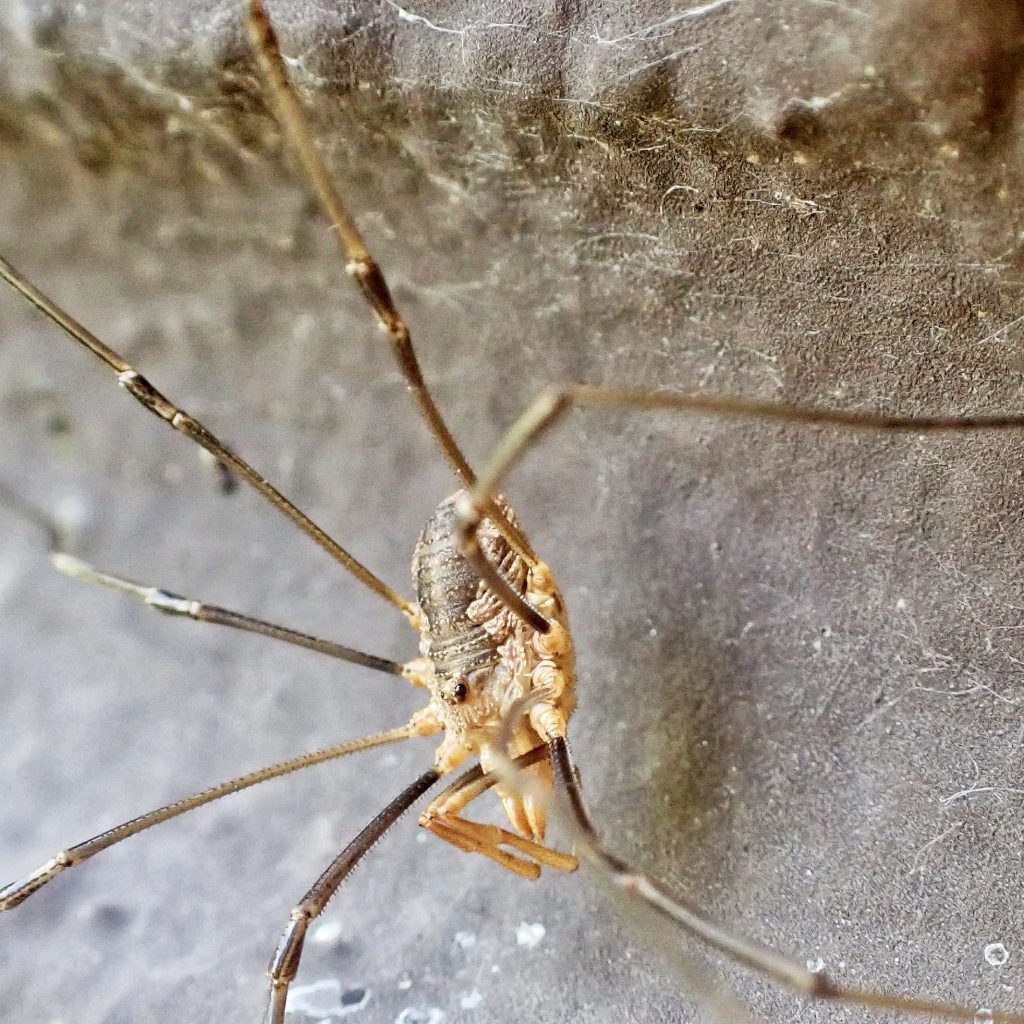
Habitat– “This species can be found in a wide range of open habitats, including meadows, bogs, and forests.[5] It is also most abundant in anthropogenic habitats,[4] and is thus considered a synanthropic species of harvestmen. In can be found in habitats modified by humans, such as gardens, agroecosystems, hedgerows, lawns, quarries, urban green spaces, walls and bridges.[5] In agricultural settings, P. opilio is common in temperate cropland, living among crops such as corn, alfalfa, small grains, potatoes, cabbage, strawberries, and apple.[6] P. opilio apparently prefer vertical surfaces, including tree trunks and vertical man-made structures like fences and walls,[4] with a preference for wood substrate due to its low thermal conductivity and slow release of moisture, being a thermophilous and moderately hygrophilous species.” https://en.wikipedia.org/wiki/Phalangium_opilio
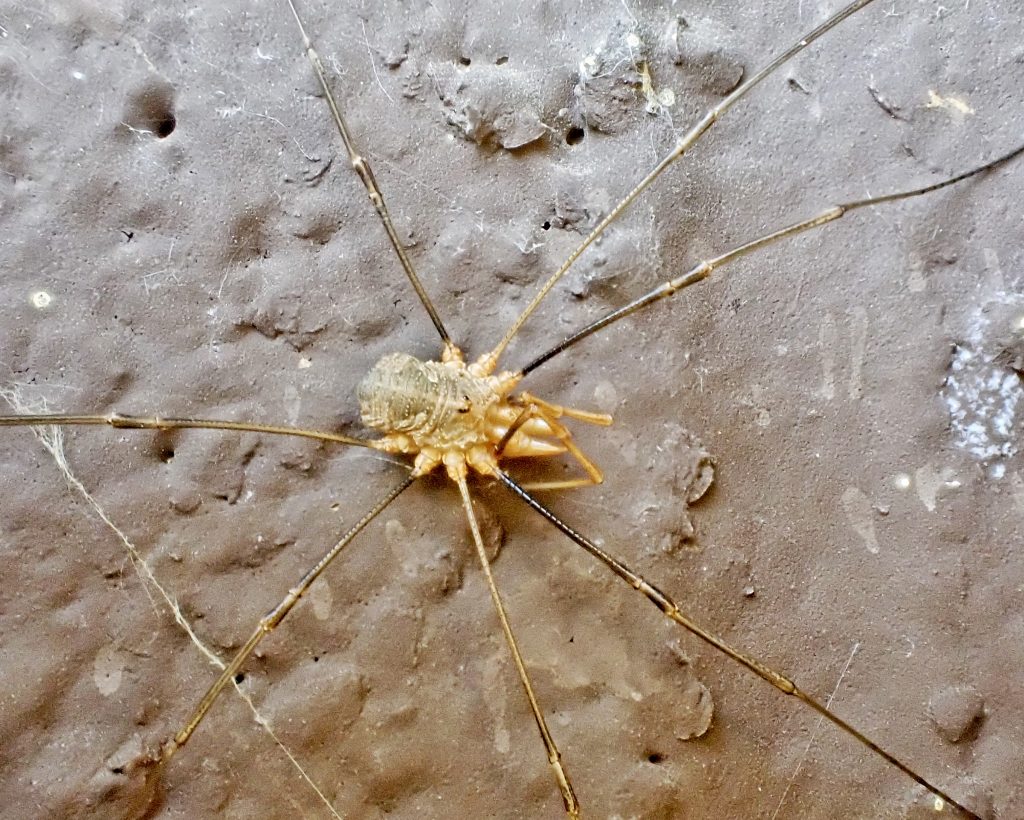
Eats– “Soft-bodied animals such as aphids, caterpillars, leafhoppers, beetle larvae, mites, slugs, etc. Also known to scavenge on various arthropods, including hard-bodied animals.” Species Phalangium opilio – BugGuide.Net
Eaten by– Presumably preyed upon by insectivores of all classes, and probably parasitized by some wasps and flies, but I can find nothing specific to this species.
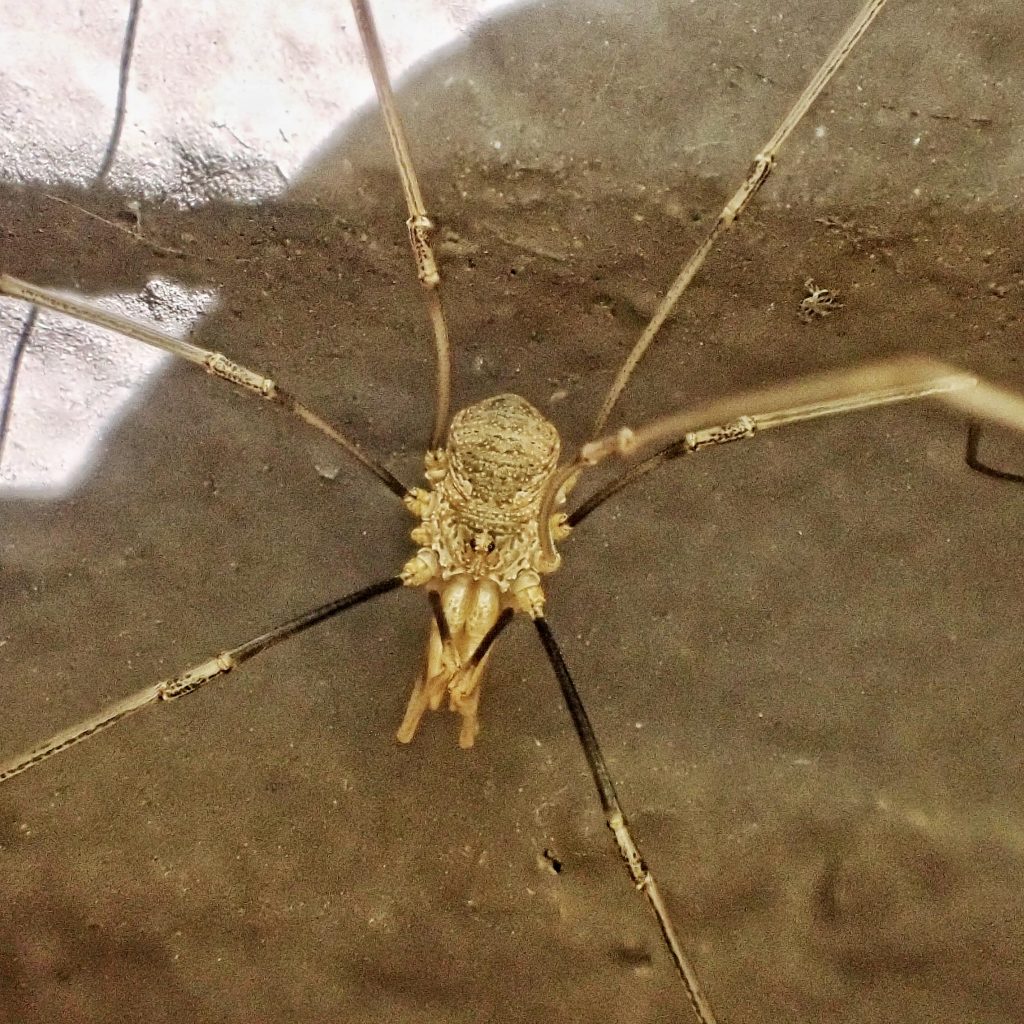
Life cycle– “In Europe P. opilio has a single generation per year and overwinters as eggs. In parts of North America two or more generations may occur, and eggs, immatures, or adults may overwinter. Eggs are laid in moist areas under rocks, in cracks in the soil, or between the soil and the crowns or recumbent leaves of plants. The eggs hatch in three weeks to five months or more, depending on temperature, and the immatures undergo several molts and reach maturity in two to three months, again depending on temperature…Eggs are spherical, about 0.4 mm diameter, with a smooth surface and color changing from off-white to dark gray-brown as they mature. They are laid in clusters of around ten to several hundred.” Phalangium opilio
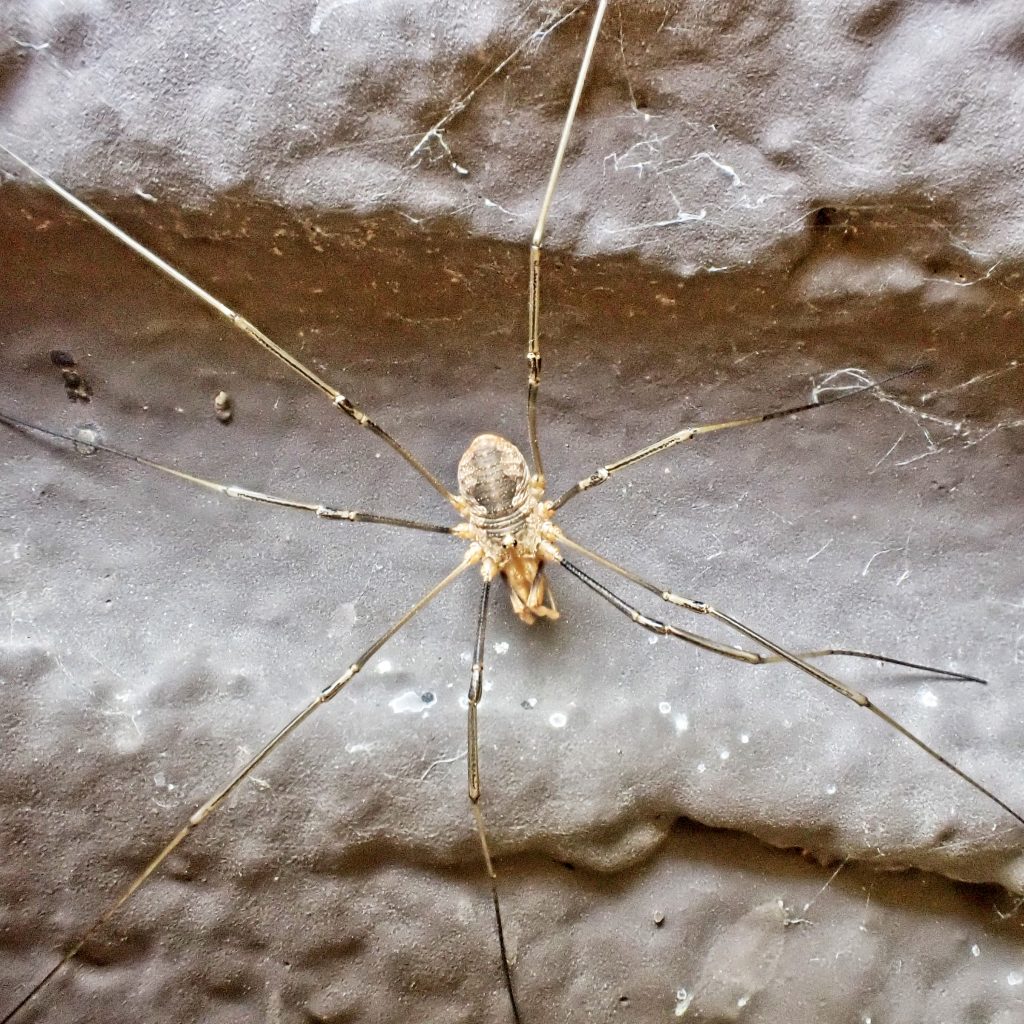
Adults active– Spring into early winter
Etymology of names– Phalangium is from the Greek word for ‘the bone between the joints of the finger’, and probably refers to the tarsi being divided into many tarsomeres, although the word was also used in Ancient Greece to denote a spider. The specific epithet opilio, which also gave rise to the name of the order, is from the Latin word for shepherd, and refers to the fact that their long legs reminded people of the stilts that European shepherds used to be able to keep tabs on their flock from a distance.
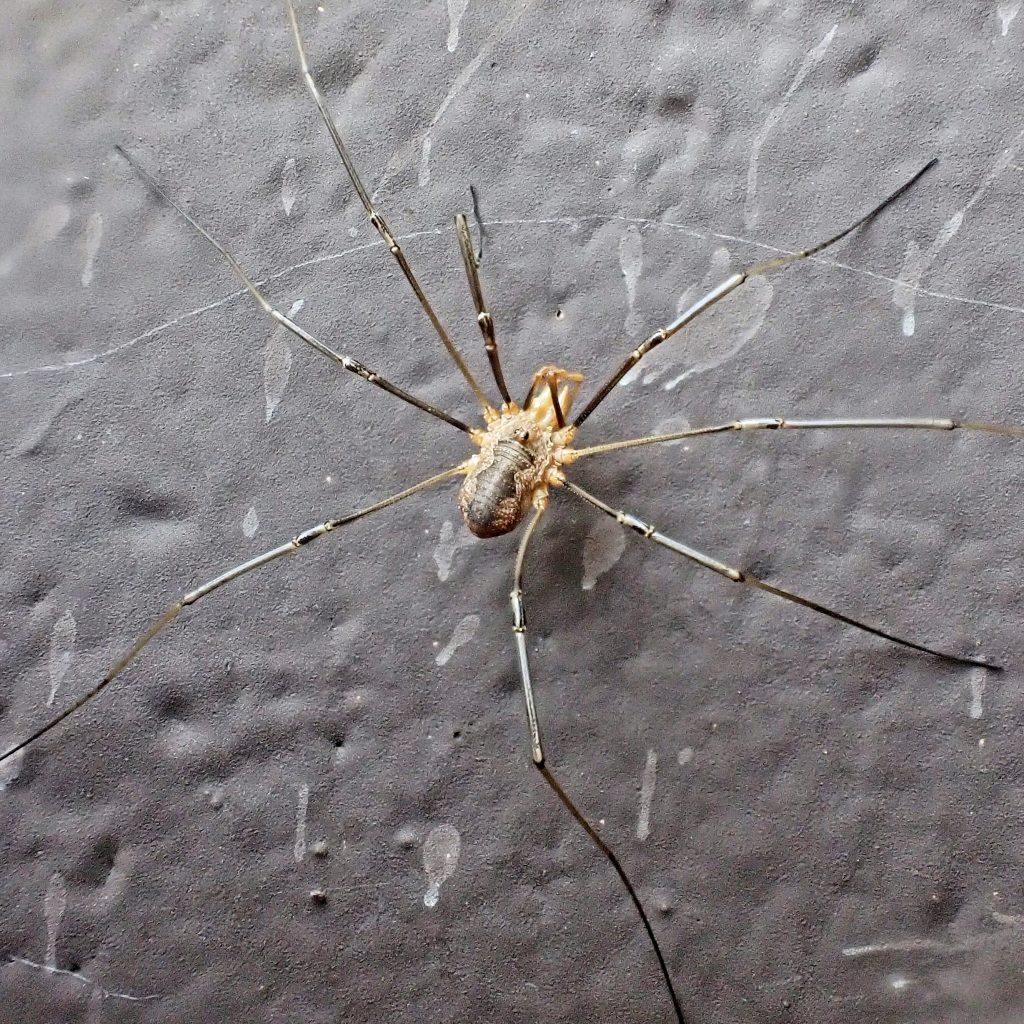
Species Phalangium opilio – BugGuide.Net
https://books.google.com/books/about/Soil_Biology_as_Related_to_Land_Use_Prac.html?id=uKi9nemnQwYC
Summary for Phalangium opilio (Opiliones)
https://en.wikipedia.org/wiki/Phalangium_opilio
